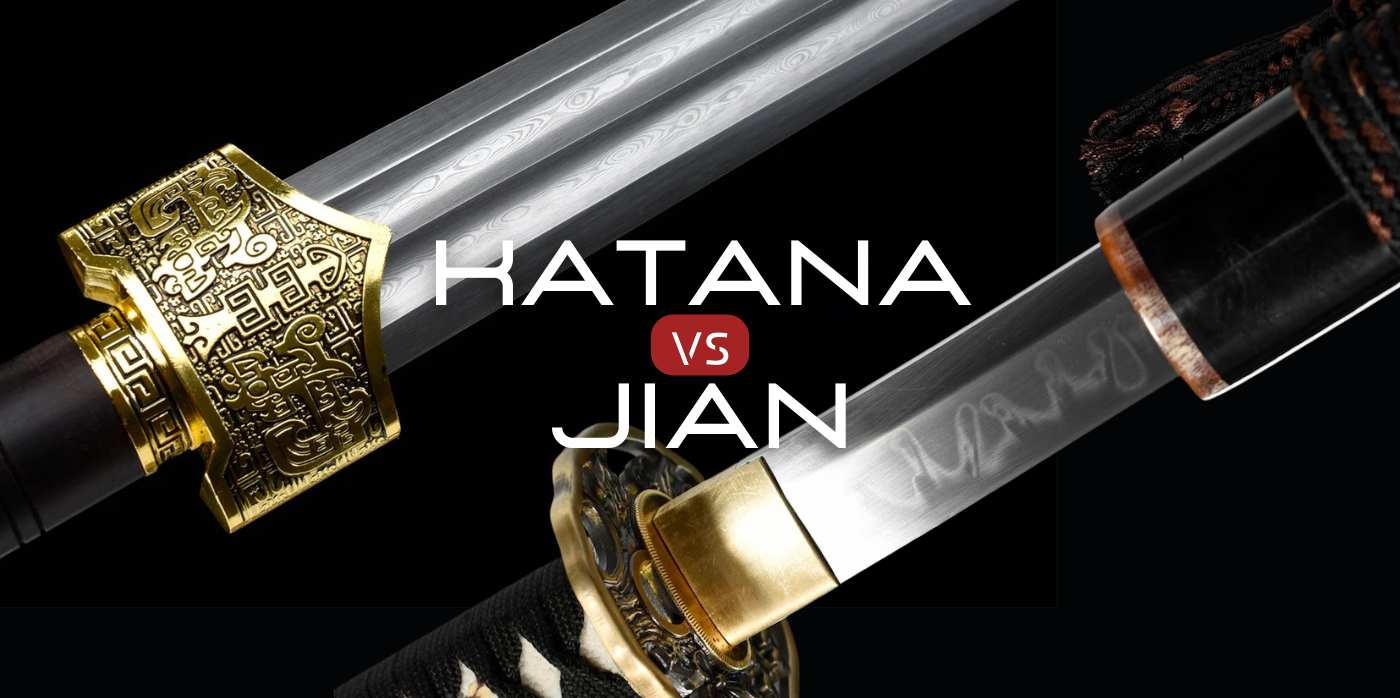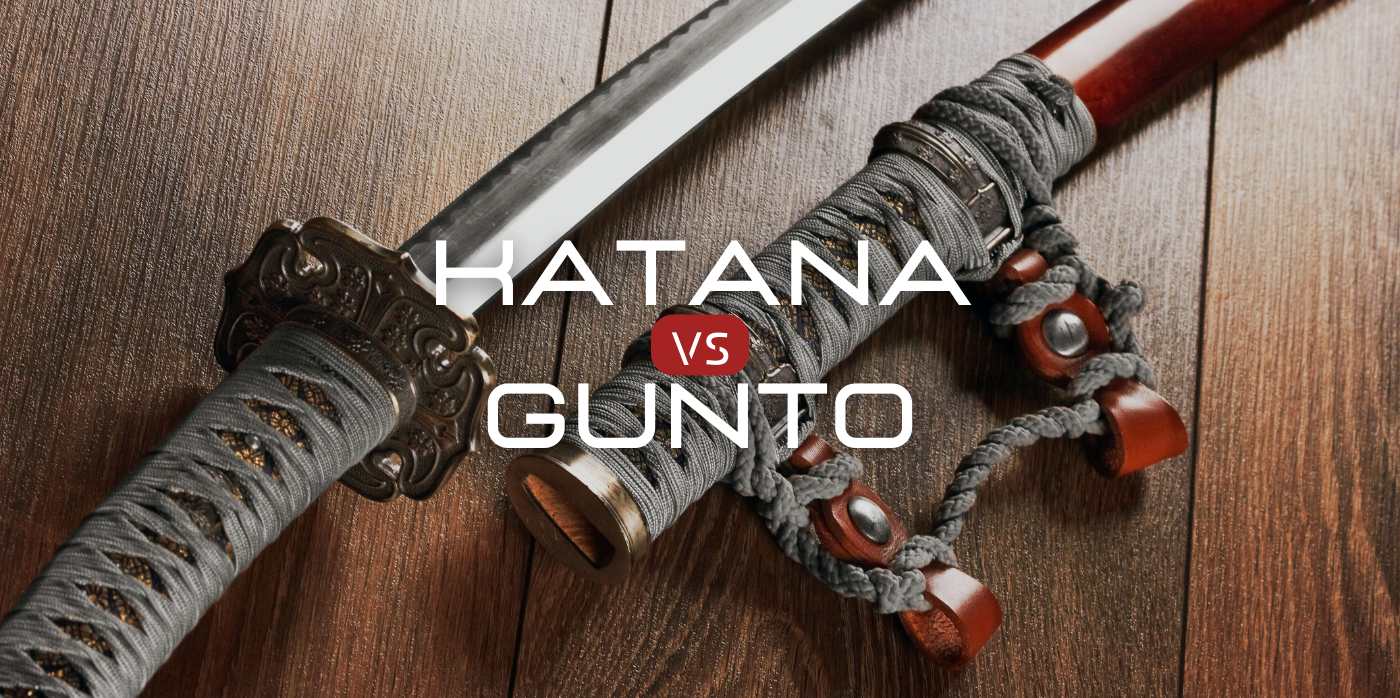The world of Japanese swords is diverse and fascinating, offering numerous variations each with unique attributes, histories, and uses. Two such swords, which are often compared and contrasted, are the Ōdachi and the Katana. In this article, we delve into the fine details and contrasts between these two remarkable weapons.
1. Understanding the Katana and the Ōdachi
Renowned as the symbolic Japanese sword, the Katana is a fusion of cultural tradition, artistic mastery, and martial capability. Its distinct features, a curved, thin, and single-edged blade, have become synonymous with the image of the Samurai.
Conversely, the Ōdachi (大太刀), sometimes referred to as the "Nodachi", is categorised as a 'great sword', outmatching most of its Japanese counterparts in sheer size. To be considered as "Odachi", a Japanese sword must be at least 3 shaku (Approximately 35.43" | 90cm). These lengthy weapons were mainly utilized during battles as they offered excellent reach and cutting capability, albeit at the cost of maneuverability.
Historically, the Ōdachi was employed in battlefields and ceremonies, but its unwieldy length and weight made it less practical for close-quarters combat.
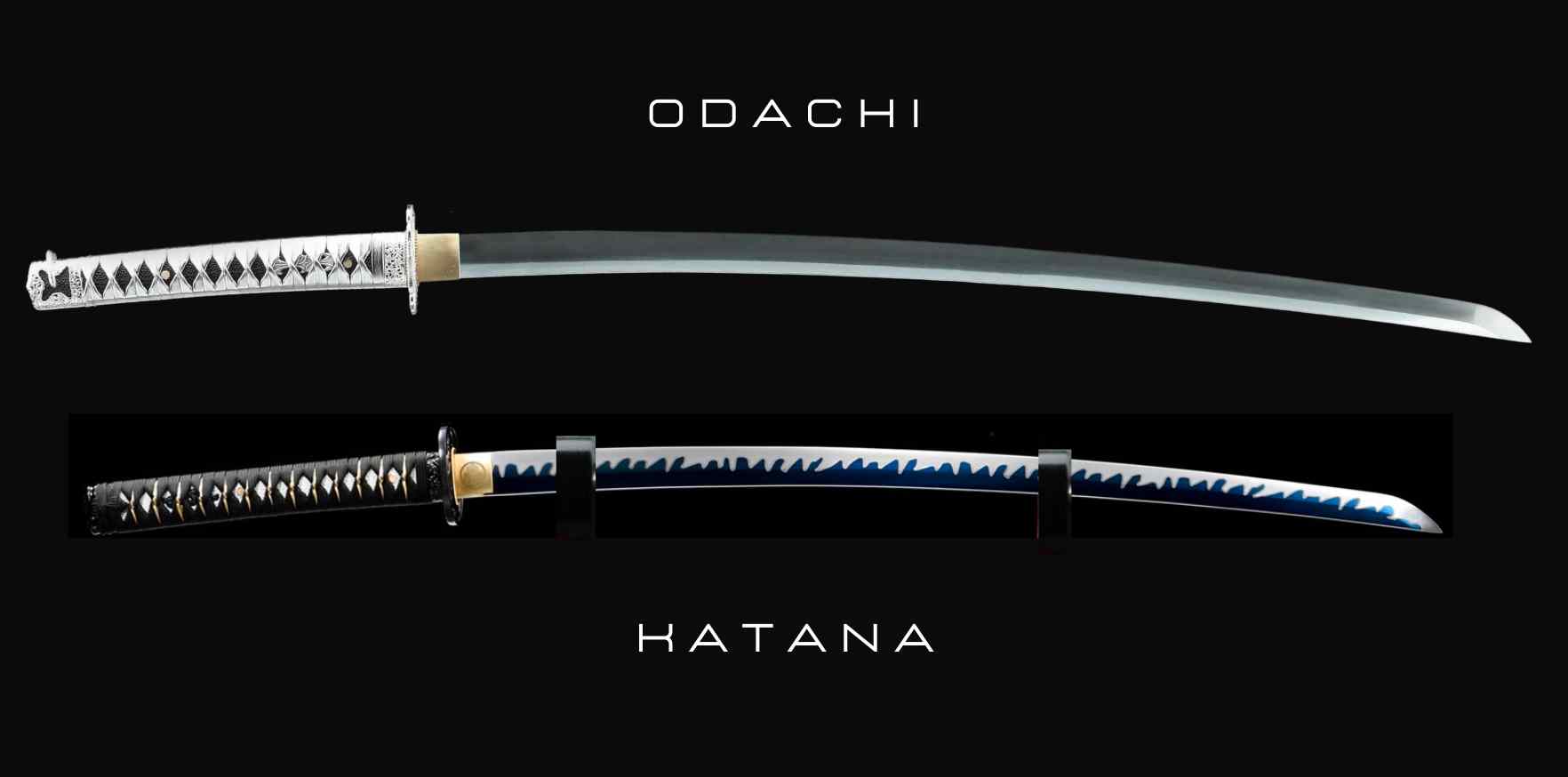
2. Katana Craftsmanship vs Ōdachi
The process of crafting a Katana is a meticulous and ritualized process, often taking several weeks or even months. Traditional Katana craftsmanship involves folding steel multiple times, creating an intricate pattern on the blade and enhancing its strength and flexibility.
Ōdachi, due to their size, required an equally complex, if not more, craftsmanship process. The difficulty lay not only in the forging but also in the heat treatment and polishing of such a large blade, requiring a high level of skill and patience.
3. Katana Parts vs Ōdachi
3.1 Blade
The Katana blade, typically between 23.62" to 28.74" long (60 and 73 cm), is renowned for its sharpness and cutting power, made possible by a hard steel edge and a soft, flexible spine.
The Ōdachi's blade length is much greater, often exceeding 35.43" (90 cm). This length allowed for greater reach and powerful cutting strokes on the battlefield but made the sword less manageable in confined spaces or one-on-one duels.
3.2 Guard
The Katana guard, or tsuba, tends to be round or square and serves to protect the hand from the opponent's blade. It can be ornately decorated, reflecting the Samurai's status or beliefs.
The Ōdachi's guard is generally larger than the Katana's to match the larger hilt and blade. It performed the same function but could also help to balance the longer blade.
3.3 Handle
The Katana’s handle, or tsuka, is long enough to accommodate a two-handed grip, providing better control and power during combat.
The Ōdachi's handle is much longer, providing the necessary leverage to wield the large blade. This extended length means the Ōdachi typically required a two-handed grip, although it could be used single-handedly by skilled warriors.
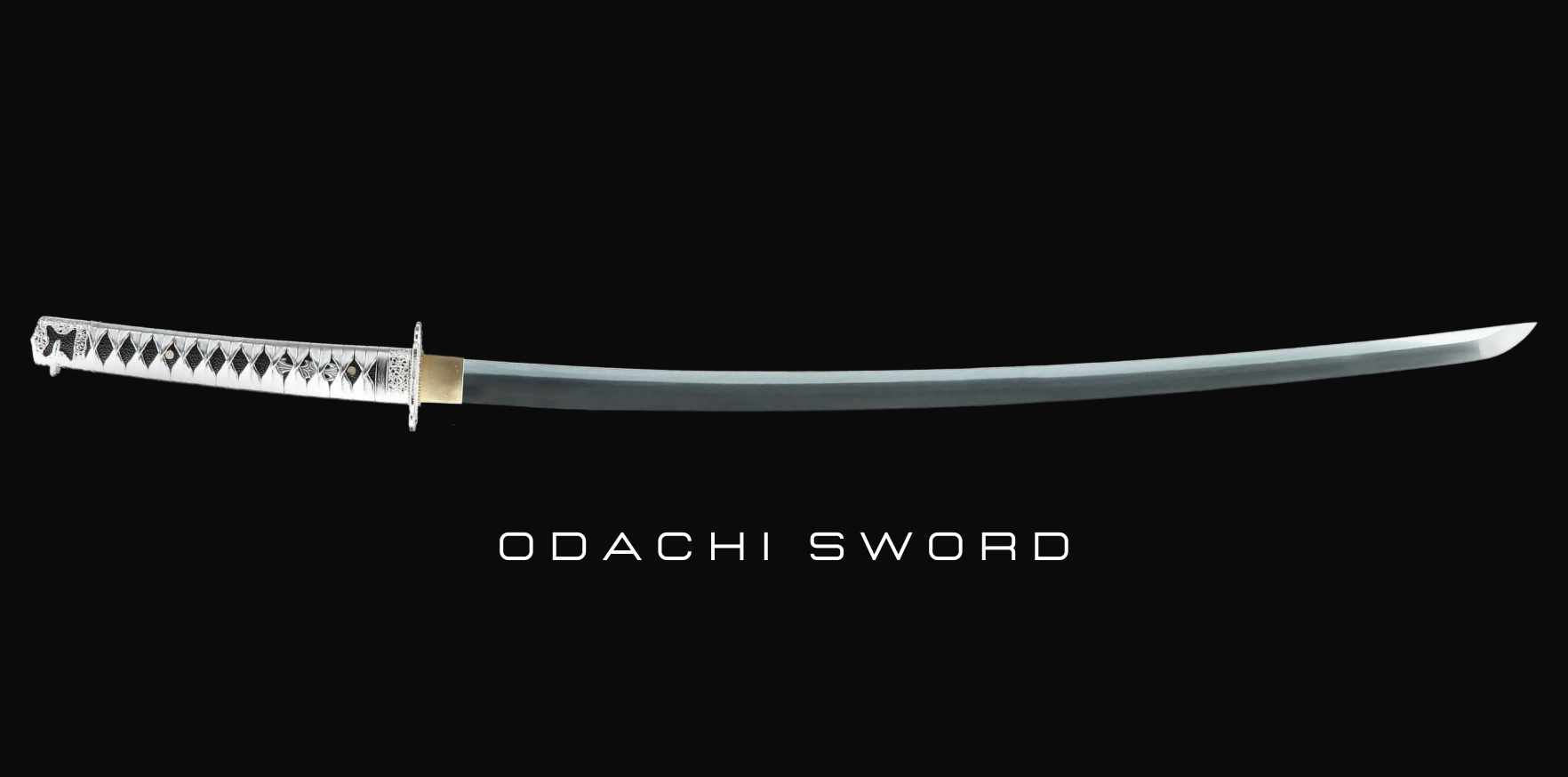
4. Katana Characteristics vs Ōdachi
4.1 Blade design
The Katana's blade is curved, allowing for fluid, slashing motions. The curvature also facilitates the drawing and sheathing of the sword, an important element in many Samurai arts.
In contrast, the Ōdachi's blade is also curved, but the curvature tends to be more subtle due to the sword's length. The primary design focus of the Ōdachi was to create a sword capable of powerful, sweeping cuts.
4.2 Weight of the blade
The Katana is balanced to be light enough for quick, precise strikes yet heavy enough to deliver powerful cuts. Its weight typically ranges between 2.43lbs and 3.53" (1.1 and 1.6 kg).
The Ōdachi is significantly heavier, with weights often exceeding 4.41lbs (2 kg). This extra weight, combined with the sword's length, made the odachi powerful but slower to wield.
4.3 Sharpness
Katanas are renowned for their sharpness, a result of the differential hardening process in which the edge of the blade is made harder than the spine.
Similarly, Ōdachi were sharpened to a fine edge to deliver devastating cuts. However, the maintenance and sharpening of such a large blade required considerable skill and effort.
4.4 Grip
The Katana's grip is designed for a two-handed hold, providing excellent control and power. The handle's wrap, made from rayskin and silk cord, ensures a secure grip.
The Ōdachi's grip, longer than the Katana's, offers the necessary leverage to manage the larger blade. It was also wrapped in a similar manner to ensure a secure hold.
4.5 Balance
A Katana's balance point is usually just a few inches above the guard, providing a good compromise between control and cutting power.
The Ōdachi's balance point is further up the blade due to its size. This balance helped to manage the weight of the sword but made it more challenging to control.
4.6 Durability
Katanas are remarkably durable, owing to the combination of hard and soft steel in their construction.
Ōdachi were also durable, but their size made them more susceptible to damage in combat. Furthermore, their large size made any necessary repairs or maintenance more challenging.
4.7 Reach
The Katana's reach, while less than the Ōdachi's, is ample for most one-on-one combat situations. Its length allows for a good blend of defensive and offensive capabilities.
The Ōdachi's reach is significantly greater, an advantage in certain combat scenarios such as battling mounted opponents. However, this extended reach could also be a disadvantage in confined spaces or against quicker opponents.
Summary:
- The Katana is designed for speed, precision, and power, with a balance, weight, and grip optimized for two-handed use. The Ōdachi, with its greater size and weight, is designed for reach and powerful cuts, but its size can make it more difficult to wield.
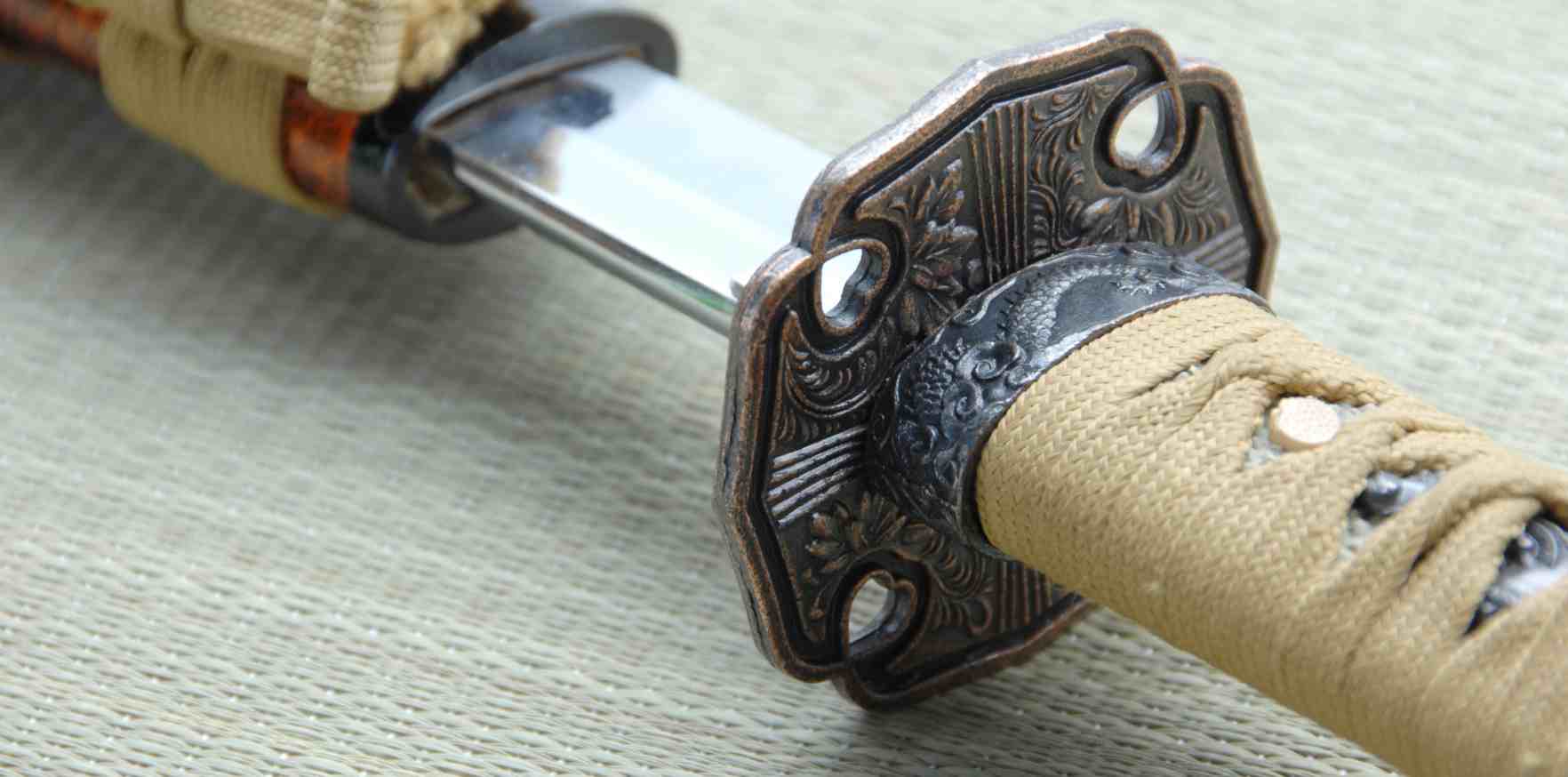
5. Katana Combat Style vs Ōdachi
With its well-calibrated balance and size, the Katana lends itself to a wide array of combat techniques. It thrives in both aggressive and protective stances, enabling rapid, accurate thrusts and potent slashes. Techniques include quick-draw strikes, parries, slashes, and thrusts.
The Ōdachi, due to its size and weight, was used differently. Its primary role was to deliver powerful, sweeping cuts, often aimed at dismounting cavalry or breaking through enemy lines. The size and weight of the Ōdachi made it less suited to quick, precise movements.
In a duel, the advantage would depend largely on the skills of the combatants and the circumstances of the fight. The Katana's versatility might offer an edge in confined spaces or situations requiring speed and precision. In contrast, the Ōdachi's reach and power might provide an advantage in open spaces or against armored opponents.
6. Katana Maintenance vs Ōdachi
Katana maintenance, while not overly complicated, is an essential part of sword ownership. It involves regular cleaning, oiling, and inspections to prevent rust or damage. Any necessary repairs or sharpening should be done by a professional to avoid damaging the sword.
Ōdachi maintenance is similar to Katana maintenance but can be more challenging due to the size of the sword. The blade requires regular cleaning and oiling, and any necessary repairs or sharpening require considerable skill due to the blade's size and weight.

7. History and Origin of the Katana vs Ōdachi
The Katana's history is closely tied to the Samurai, emerging around the 15th century as a response to changing warfare tactics. Its design emphasized quick-draw attacks, allowing the Samurai to strike swiftly and decisively.
The Ōdachi's origins are less clear, but they likely emerged around the same time as the Katana. These large swords were used in warfare, likely by foot soldiers against cavalry. Nonetheless, their considerable dimensions rendered them unsuitable for various scenarios, leading to their eventual decline as instruments of warfare.
Despite the awe-inspiring presence and potent strengths of the Ōdachi in combat, its era of dominance was inevitably bound to conclude. The practical realities of war and resource management led to its gradual decline and eventual discontinuation in military contexts.
Producing an Ōdachi was no small feat. The sword's grand size necessitated the use of substantial amounts of high-quality steel and required a level of craftsmanship that was both highly skilled and time-consuming. These factors made the process of creating an Ōdachi significantly more expensive compared to other swords.
In addition, the sheer length of time it took to manufacture an Ōdachi was a drawback in times of war, when speed and efficiency in armament production were of the essence. The effort required to craft, sharpen, and maintain these great swords was not congruent with the high-paced demands of warfare. Moreover, equipping an entire infantry with Ōdachi was a logistical challenge, as these swords were not only heavier but also required more space, both for storage and for effective use in combat.
Ultimately, these practical considerations outweighed the Ōdachi's benefits on the battlefield. The cost, time, and logistical challenges of producing and deploying Ōdachi led to their phase-out in favor of more manageable and cost-effective weapons, such as the Katana.
Conclusion
The Katana and Ōdachi, each with their unique attributes and histories, offer fascinating insights into Japanese martial arts and culture. While they share some similarities, their differences in design, use, and symbolism reflect the diverse needs and challenges faced by the warriors who wielded them.
Whether you prefer the swift, precise strikes of the Katana, or the commanding presence and powerful cuts of the Ōdachi, both these swords command respect and admiration for their craftsmanship, history, and martial prowess.




